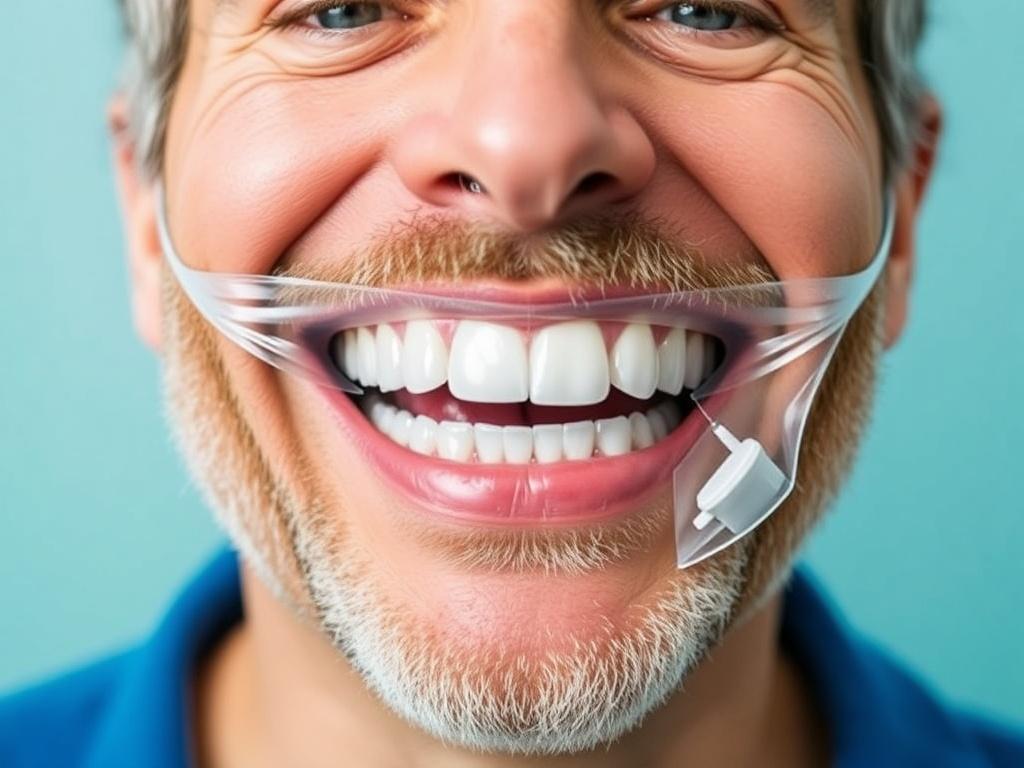Orthodontics is often thought of as a rite of passage for teenagers, but the truth is that adult orthodontics has become increasingly popular and accessible. Whether you missed the chance to straighten your teeth as a teen or your smile has changed over the years, it’s never too late to seek orthodontic treatment. Advances in technology, changes in social attitudes, and growing awareness about oral health have led more adults to explore options like braces or clear aligners to improve their smiles and confidence. In this article, we’ll cover everything you need to know about adult orthodontics, from why it matters to what treatment options are available, how to care for your braces or aligners, and the lasting benefits you can expect.
Содержание
- 1 Why Adults Choose Orthodontic Treatment
- 2 Common Misconceptions About Adult Orthodontics
- 3 Understanding Adult Orthodontic Treatment Options
- 4 The Orthodontic Process Step by Step
- 5 How to Maintain Oral Health During Orthodontic Treatment
- 6 Benefits of Adult Orthodontics Beyond the Smile
- 7 Affordability and Insurance Tips for Adult Orthodontics
- 8 Is Adult Orthodontics Right for You?
Why Adults Choose Orthodontic Treatment

Orthodontic treatment isn’t only about aesthetics; it’s about improving dental health, function, and overall well-being. Many adults seek orthodontic care to address a variety of concerns that go beyond just the look of their smile.
Some common reasons adults choose orthodontics include:
- Crowded or crooked teeth: These can cause difficulties in cleaning, leading to plaque buildup and gum disease.
- Bite problems: Issues such as overbite, underbite, or crossbite can cause jaw pain, headaches, and uneven wear of the teeth.
- Relapse after childhood treatment: Teeth can shift over time if retainers aren’t worn consistently.
- Desire for a confident smile: A straighter smile can boost self-esteem and improve social and professional interactions.
- Preparation for dental restorations: Properly aligned teeth are easier to restore with crowns, implants, or bridges.
Even if you think orthodontic treatment is solely for the young, adult orthodontics offers many solutions suited to your unique lifestyle and needs.
Common Misconceptions About Adult Orthodontics

Despite its growing popularity, adult orthodontics still faces several misconceptions that discourage people from seeking treatment. Let’s debunk some of the most common myths.
Myth 1: Orthodontics only works for children and teenagers.
One of the biggest misconceptions is that orthodontic treatment is ineffective after a certain age. The reality is that teeth can be moved at any age, although treatment time might be slightly longer in adults due to denser bone. Still, the outcomes are just as rewarding.
Myth 2: Braces are unattractive and cumbersome.
Thanks to modern advancements, adults have multiple options beyond traditional metal braces, including clear ceramic braces, lingual braces (hidden behind the teeth), and nearly invisible clear aligners like Invisalign. These options make orthodontics much more discreet and comfortable.
Myth 3: Orthodontic treatment is painful and complicated.
While some discomfort is normal when teeth begin to move, modern orthodontic techniques have minimized pain and inconveniences. Your orthodontist will customize a treatment plan ensuring ease and convenience.
Myth 4: Orthodontics takes too long for busy adults.
Treatment durations vary depending on the complexity, but many adults complete treatment in 6 months to 2 years. Advances have also shortened treatment times in many cases, making it easier to fit orthodontics into a busy lifestyle.
Understanding Adult Orthodontic Treatment Options

Adult orthodontics today offers several choices tailored to your needs, lifestyle, and budget. Let’s explore the main options.
Traditional Metal Braces
Traditional braces still have their place due to their efficiency and reliability. They consist of metal brackets bonded to the teeth with wires that are regularly adjusted to guide teeth into position. Many adults find them effective, especially for complex cases.
Ceramic Braces
Ceramic braces work like traditional braces but use tooth-colored or clear brackets that blend in with your teeth. They’re less noticeable but slightly more fragile and sometimes cost more.
Lingual Braces
Lingual braces are attached to the back of the teeth, making them invisible from the front. Although they require more adjustment and expertise from the orthodontist, they are an excellent option for adults who want completely hidden braces.
Clear Aligners
Clear aligners have revolutionized adult orthodontics. These are transparent, removable trays custom-made to fit your teeth and gradually shift them into the ideal position. Invisalign is a leading brand, but many orthodontists offer similar systems. Aligners are popular because they are virtually invisible, removable for eating and cleaning, and usually more comfortable.
Comparing Treatment Options
Here’s a simple comparison table to help visualize the pros and cons of each treatment:
| Option | Visibility | Comfort | Effectiveness for Complex Cases | Maintenance | Cost Range |
|---|---|---|---|---|---|
| Traditional Metal Braces | Highly visible | Moderate discomfort initially | Highly effective | Regular orthodontist visits for adjustments | $$ |
| Ceramic Braces | Less visible | Moderate discomfort | Effective for most cases | Careful cleaning needed to avoid stains | $$$ |
| Lingual Braces | Invisible from front | Can cause speech issues initially | Effective for complex cases | Specialized orthodontist required | $$$$ |
| Clear Aligners | Virtually invisible | Most comfortable | Best for mild-to-moderate cases | Must be worn 20-22 hrs/day, replaced every 1-2 weeks | $$$ |
The Orthodontic Process Step by Step
Knowing what to expect can ease anxiety about orthodontic treatment. Here’s a typical journey in adult orthodontics:
1. Initial Consultation
You’ll meet your orthodontist to discuss your concerns, goals, and medical/dental history. Digital images, X-rays, and scans may be taken to assess your teeth and jaws.
2. Customized Treatment Plan
Based on the assessment, the orthodontist will propose a plan suited to you, including the type of braces or aligners, estimated treatment length, and cost.
3. Appliance Placement or Delivery
If you choose braces, the orthodontist bonds brackets to your teeth and inserts wires. For aligners, you receive a series of trays with instructions.
4. Regular Adjustments and Monitoring
Braces require periodic tightening or wire changes, usually every 4 to 8 weeks. Aligners need to be replaced according to schedule, with check-ins every 6 to 8 weeks.
5. Completion and Retention
After active treatment ends, retainers are essential to keep teeth in their new positions. They can be fixed or removable and must be worn consistently.
How to Maintain Oral Health During Orthodontic Treatment
Oral care is crucial when wearing braces or aligners to prevent decay, staining, and gum problems. Adults sometimes worry about dental hygiene challenges, but with proper habits, a healthy mouth is entirely achievable.
- Brushing: Brush your teeth after every meal using a soft-bristled toothbrush and fluoride toothpaste. Specialized interdental brushes can help reach around brackets and wires.
- Flossing: Use floss threaders or orthodontic floss picks daily to clean between teeth.
- Aligner Care: Remove aligners before eating or drinking (except water) and clean them regularly with a gentle toothbrush and clear soap.
- Regular Dental Visits: Continue seeing your general dentist for cleanings and exams during orthodontic treatment.
- Avoid Certain Foods: Hard, sticky, or sugary foods can damage braces or cause cavities. Cut back on snacks like nuts, popcorn, and chewing gum.
Maintaining a strong oral hygiene routine will protect your investment and ensure a beautiful smile when treatment ends.
Benefits of Adult Orthodontics Beyond the Smile
Getting adult orthodontics isn’t merely about appearance. The benefits can extend to your overall health and quality of life in ways you might not expect.
Improved Oral Health
Straighter teeth are easier to clean and less prone to cavities and gum disease, promoting lifelong dental health.
Better Function
Correcting bite issues can improve chewing efficiency, reduce jaw strain, and minimize problems like teeth grinding or temporomandibular joint disorder (TMJ).
Boosted Confidence and Mental Well-being
Adults frequently report feeling more self-assured in social situations and behind the camera, positively impacting relationships and careers.
Long-Term Cost Savings
Investing in orthodontics now can prevent costly dental repairs, extractions, or prosthetics in the future caused by untreated malocclusions.
Affordability and Insurance Tips for Adult Orthodontics
Cost is one of the biggest concerns for adults considering orthodontics, but many options exist to make treatment affordable.
Average Costs
Depending on treatment type and complexity, adult orthodontics can range from $3,000 to $8,000 or more. Metal braces tend to be the most affordable; lingual braces are often the most expensive.
Insurance Coverage
Traditionally, dental insurance focused on children, but increasingly insurance plans include partial coverage for adult orthodontics, especially if related to medical necessity.
Flexible Payment Plans
Many orthodontic offices offer payment plans, low-interest financing, or third-party lenders to spread out the cost and make treatment manageable.
Health Savings Accounts (HSA) or Flexible Spending Accounts (FSA)
If you have an HSA or FSA, orthodontic treatment is often an eligible expense, effectively lowering your out-of-pocket costs.
Is Adult Orthodontics Right for You?
If you’re considering adult orthodontics, start with a self-assessment of your dental concerns and goals. Ask yourself:
- Am I unhappy with the appearance or function of my teeth?
- Do I experience discomfort or difficulty chewing?
- Do I feel self-conscious in social or professional settings because of my smile?
- Am I committed to maintaining excellent oral hygiene during treatment?
- Am I willing to follow a treatment plan over months to years?
If you answered yes to some of these, consult with an orthodontist. They will guide you toward the best solution tailored to your unique smile journey.
Questions to Ask Your Orthodontist
When visiting your orthodontist, come prepared with questions like:
- What treatment options are best suited for my specific case?
- How long will treatment take, and what can I expect during the process?
- What are the total costs, including retainers and follow-ups?
- How will treatment impact my daily life and work schedule?
- What are the risks or potential complications during treatment?
Getting clear answers will empower you to make the right decision with confidence.
Conclusion
Adult orthodontics has truly transformed from a niche option to an accessible and rewarding dental journey for people of all ages. It’s never too late to invest in your smile, health, and confidence. With a variety of discreet, comfortable, and effective treatment choices available, adults can achieve straighter teeth and better function without sacrificing their lifestyle or aesthetics. Whether you opt for traditional braces, ceramic or lingual options, or clear aligners, the benefits extend far beyond a better-looking smile—they can improve oral health, reduce discomfort, and elevate your quality of life. If you’ve been hesitant about adult orthodontics, now is the perfect time to explore possibilities with a specialist who can tailor a plan just for you. Remember, your best smile is waiting, and there’s no age limit to starting that transformation.



